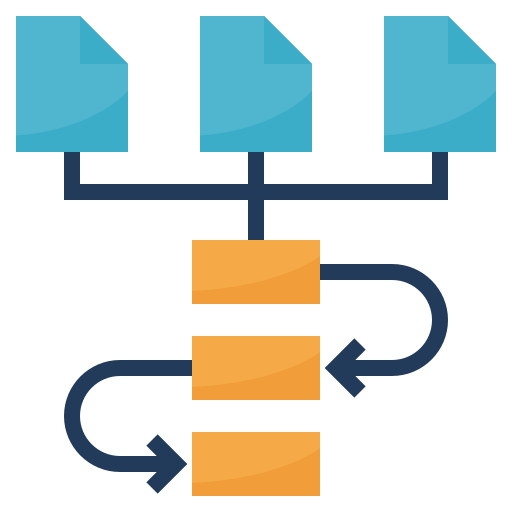Optimizing Business Workflows Through LLM Integration
What is a Workflow?
According to Wikipedia, a workflow is defined as the operational aspect of a work procedure. It describes how tasks are structured, who performs them, their sequence, synchronization, the flow of supporting information, and how tasks are tracked.

Automating workflows can significantly enhance convenience for both customers and employees and drive business growth, which is why many companies are actively adopting workflow automation. Essentially, automating workflows involves using computers or software programs to handle repetitive tasks or business processes, eliminating the need for manual intervention.
Challenges in Business Process Management and Pathways to Solutions
Today, most companies face challenges in managing business processes. Overseeing large teams, managing diverse tasks, and integrating multiple technologies into services often create bottlenecks. In their pursuit of efficiency in rapidly changing environments, these obstacles push companies to accelerate digital transformation and workflow automation initiatives.
In this fast-evolving digital landscape, AI technologies—especially Large Language Models (LLMs)—are revolutionizing how companies streamline operations. Tools like LLMs empower businesses to optimize and automate workflows, helping them stay competitive and agile.
LLMs are advanced AI models designed to understand and generate text like human communication. Although these language models continue to evolve, they still rely on training datasets to establish relationships and generate contextually relevant content. LLMs, however, offer more than basic language functions. Unlike traditional automation tools built for specific tasks, LLMs are versatile, handling various functions from data analysis to customer engagement.
To effectively integrate LLMs, companies must first identify operational inefficiencies. Once issues and bottlenecks are pinpointed, LLMs can analyze process data and deliver actionable solutions to address these challenges.
A typical process for integrating LLMs into a company's internal systems includes:
Review Task Requirements -> Integrate LLM -> Train the Model with Relevant Data -> Iterate and Improve Through Feedback
Benefits of LLM Integration
1) Automating Repetitive Tasks to Boost Productivity and Minimize Errors
Repetitive tasks such as data entry, report generation, and customer interactions are timeconsuming and can lead to human error. LLMs efficiently handle these tasks, improving productivity and accuracy.
In practice, LLMs have significantly enhanced corporate productivity by drafting email templates, generating content like blogs or reports, and automating FAQs in customer service centers. They can also integrate with popular project management tools like Trello, Asana, and Monday.com, allowing LLMs to interpret and act on user inputs, create tasks, update statuses, and set priorities without human intervention.
2) Enhancing Customer Interactions and Delivering Personalized Experiences
LLMs are essential for companies aiming to elevate customer support. By powering intelligent chatbots and enabling personalized interactions, LLMs can transform how businesses engage with their customers, delivering rich, customized experiences. Many companies operating customer service centers are already implementing or considering AI-powered contact centers (AICCs), and some have introduced LLM-based chatbots that provide 24/7 support, tailored to each customer’s needs.
Through sophisticated data analysis and learning algorithms, LLMs offer highly personalized customer interactions. For example, by using SmartMind's ThanoSQL, companies can securely analyze customer-specific data when a customer asks a question in natural language. The LLM generates a fully customized response without external data exposure, boosting customer satisfaction, increasing loyalty, and reducing service churn.
3) Improving Decision-Making with Data-Driven Insights
LLMs empower companies with strong capabilities to make data-driven decisions. By collecting, analyzing, and presenting data effectively, LLMs enhance decision-making with real-time insights and comprehensive data analysis.
For instance, an e-commerce company might analyze customer reviews (unstructured data) to identify products with negative feedback and then evaluate the sales trends of those products (structured data) to uncover revenue fluctuations and devise solutions.
SmartMind's ThanoSQL enables even non-technical staff, such as business leaders or sales and marketing teams, to access data easily, analyze it conversationally, and make well-informed business decisions.
4) Strengthening Collaboration and Communication
LLMs are increasingly integrated into enterprise collaboration tools, streamlining internal communication and collaboration. Companies using global platforms like Microsoft Teams, Slack, Flow, and Notion, or proprietary groupware, are adopting LLMs at a rapid pace.
LLMs enhance collaboration tools by enabling writing, editing, searching, translating, and even chatbot functions. Integrating LLMs into internal messaging platforms facilitates smooth communication across departments, promoting seamless collaboration and enhancing organizational efficiency.
The Next Step After LLM Integration
As companies experience the added value of LLMs firsthand, they increasingly recognize the importance of adapting to advancements in AI. To remain innovative and efficient, companies must actively prepare for the future of LLM technology and consider its operational impact.
Businesses should be ready for the next generation of LLMs, whether in the form of AI Agents, Large Vision Models (LVMs), or Large Action Models (LAMs). Companies that stay ahead of these advancements will continue to grow and secure their market position.
Integrating LLMs into business workflows is a transformative step toward heightened efficiency and productivity. As LLM technology continues to evolve, businesses that adapt and leverage these capabilities will drive innovation and success well into the future.